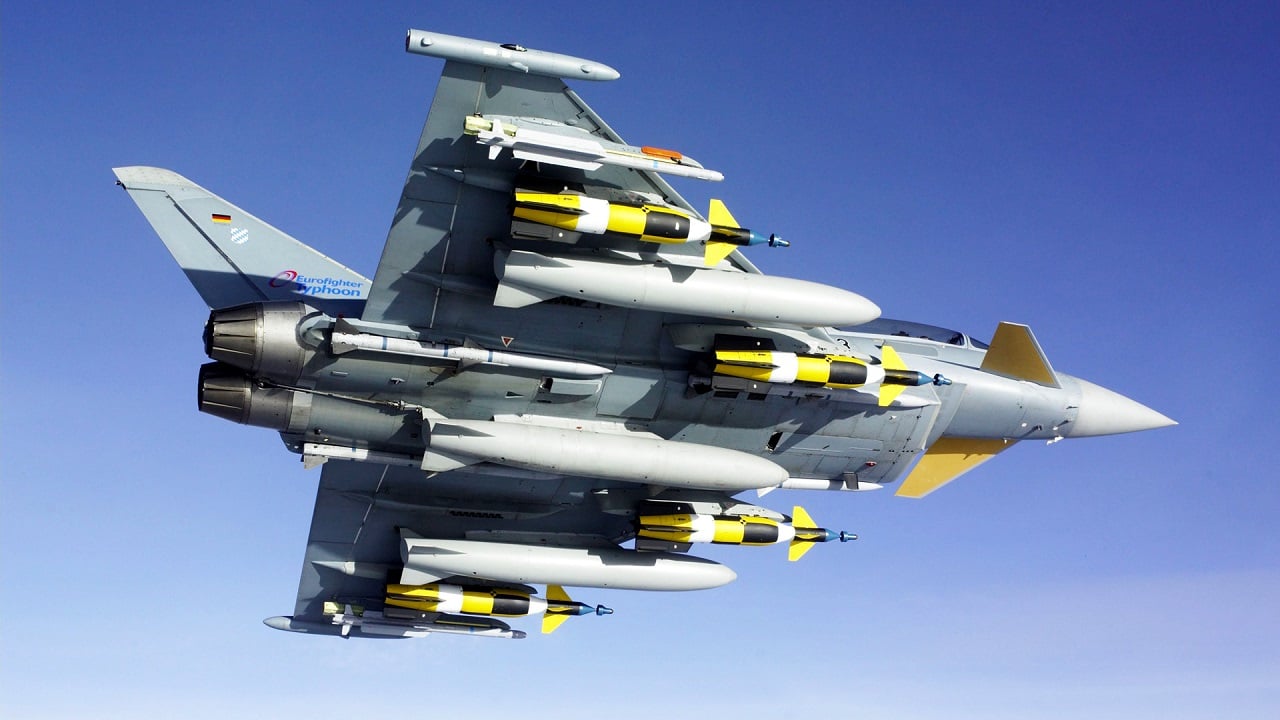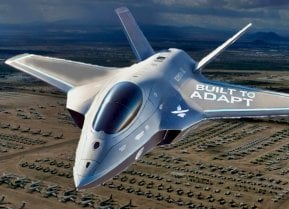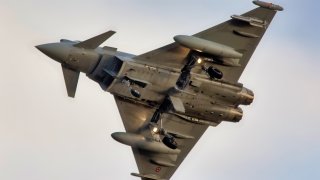Eurofighter Typhoon: Inside the Fighter Jet Success Story That Can't Be Ignored
The Eurofighter Typhoon represents a rare European defense success, developed through collaboration in the post-Cold War era. While the recent European Defense Industrial Strategy aims to boost EU-made weapons production, it faces challenges, with a modest €1.5 billion budget stretched from 2025 to 2027.
Summary and What You Need to Know: The Eurofighter Typhoon represents a rare European defense success, developed through collaboration in the post-Cold War era. While the recent European Defense Industrial Strategy aims to boost EU-made weapons production, it faces challenges, with a modest €1.5 billion budget stretched from 2025 to 2027.

-In contrast, the Eurofighter emerged from unified efforts by European nations pooling resources and bypassing complex bureaucracies, resulting in a globally respected fighter jet.
-Today, however, EU defense production is mired in organizational inefficiencies, raising concerns about its ability to replicate the Eurofighter’s success and meet modern defense needs as Europe seeks greater independence from U.S. defense systems.
The Eurofighter’s development was a model for European success.
Earlier this year, the European Commission announced their first-ever European Defense Industrial Strategy. The program, which the Commission hailed as “the future of defense,” received plaudits from Brussels media, with some calling it a plan to make Europe “ready for war.”
But outside of Brussels, it barely made a dent. About 1.5 billion euros were allocated to the entire program, with that funding spread out from 2025 until 2027. The Commission argued the Strategy would incentivize countries to finance and purchase European-made weapons. If all worked out, more development would be centralized over time.
If 1.5 billion euros sounds like a lot, it’s not. Just a few months after the EU announced the package, a single U.S.-based defense start-up, little-known Anduril Industries, was able to raise almost the exact same amount from donors. That is a decent sum for a defense start-up. It’s peanuts for a continent looking to become a major player on the world stage.
The tragedy here is that Europe has a model for success: the Eurofighter Typhoon. While the development of the Eurofighter was tortured – as is the development of all weapons systems – the result has been spectacular: Countries the world over want to buy the Typhoon. When analysts examine how the Russian Su-35 would hold up in combat against the Eurofighter, they find the latter would stand a decent chance.
The Eurofighter is an amazing platform, and its development is a testament to how defense production could work in Europe. It emerged out of the Cold War in the early 1970s, when some European states, having finally fully recovered from World War II, were looking to step out of America’s shadow.
Once those states all realized that they were looking to do the same thing – and local defense companies realized that their governments were serious – they were able to pool their resources and, by the early 1990s, were able to have a fighter they could be proud of.
The problem is that the Eurofighter’s production seems to have been a one-off, and since then, EU leadership has decided to centralize as much as possible in the least-understandable way. Trying to examine an org chart of who runs EU-wide defense is perilous. For example, the European Union Military Staff, one would imagine, is under the command of the European Commissioner for Defense.

Wrong. It is part of the EU’s External Action Service (the closest the Union gets to a foreign ministry), which is in turn headed by the Union’s equivalent of a foreign minister. The EU got its first ever Commissioner for Defense this year, and it is unclear as to what that office will even do.
This highlights the issue with European defense production today. The Eurofighter was not built thanks to funds provided by a European Commission grant, nor was it dreamed up by a Brussels bureaucrat. If the Eurofighter never existed and the Commission today decided to attempt to create one, it would spend a decade debating who would even oversee the project.
Great weapons systems like the Eurofighter were not built this way. Weapons development is not done this way. The EU has made clear that it wants to produce more weapons and, like in the mid-Cold War era, step out of America’s shadow. As the world exits its post-Cold War bipolarity and enters a time of multipolarity, now would be the time to do just that.
That is, if the bureaucrats can get out of the way.
About the Author
Anthony J. Constantini is a foreign policy analyst and Contributing Fellow at Defense Priorities. His work has appeared in numerous domestic and international publications, including American Affairs, Politico Europe, Brussels Signal, and The American Conservative. He holds a master’s in International Relations.
Image Credit: Creative Commons.


